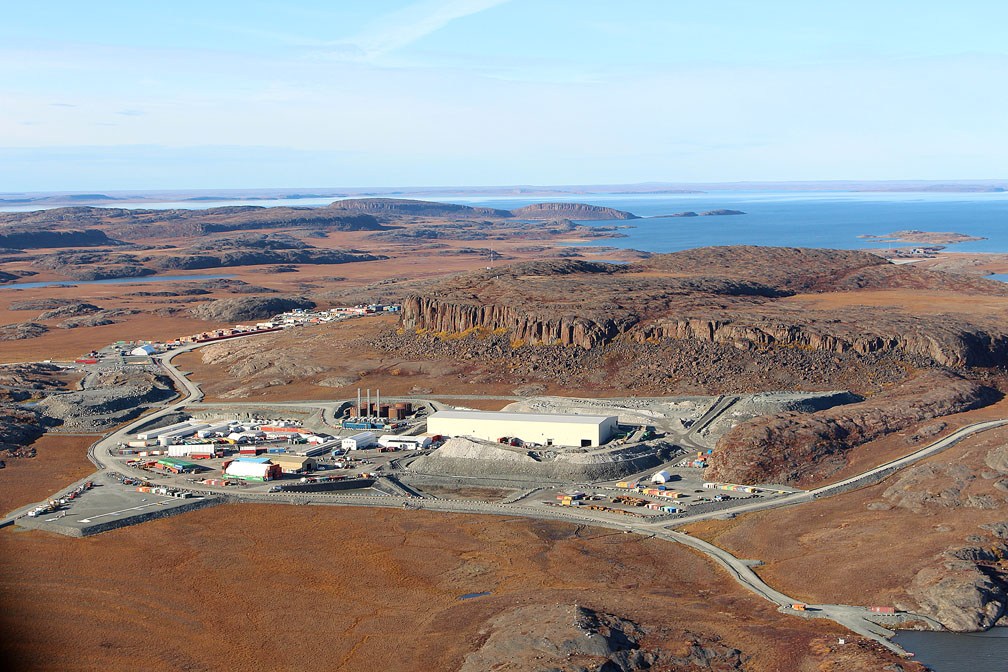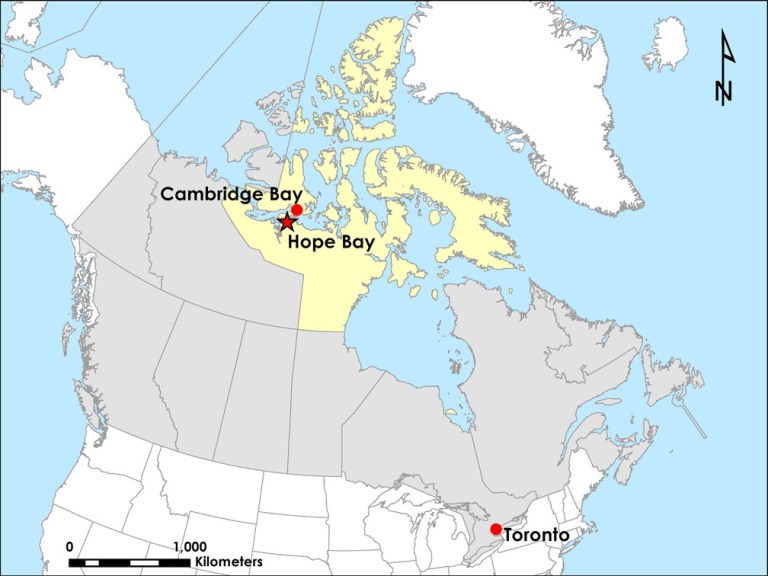New water licenses mean a big expansion for a Nunavut gold mine project
The licenses will allow mining company TMAC to launch three new mines in the Hope Bay gold field.

TMAC Resources will move ahead this year on a big southward expansion of its Hope Bay gold project, now that Northern Affairs Minister Dominic LeBlanc has signed two new water licenses recommended by the Nunavut Water Board.
The Hope Bay goldfield, which is roughly 80 kilometers long and 20 kilometers wide, is located on the mainland about 65 kilometers east of Bathurst Inlet, 150 kilometers southwest of Cambridge Bay and 700 kilometers northeast of Yellowknife.
Some of the goldfield lies on Inuit-owned land managed by the Kitikmeot Inuit Association, and some lies on Crown land.

LeBlanc approved the water licenses on Jan. 14.
This approval will let the company start developing three new mines and related infrastructure to the south of TMAC’s existing Doris North mine, at locations called Madrid North, Madrid South and Boston.
That infrastructure will include wind turbines located at various sites during the 20-year project.
Nearly $100 million in reclamation security
At the same time, the water board has determined the exact amount of cash the company must put up to guarantee that there will be enough money at the end of the project to pay for an environmental cleanup.
For the Madrid North and Madrid South mines, the company will post reclamation security totalling about $62 million.
Of that, about $51 million will be held by the KIA and about $10.4 million will be held by the federal minister.
For the Boston location, the company will put up a total of about $37.5 million in reclamation security.
Of that, $27.5 million will be held by the federal government and $9.9 million by the KIA.
The company will post its security in stages, as construction of the project proceeds over the next three years.
Inuit employment unclear
During the construction phase, the company expects to hire up to 300 people by the third year, and expects to use up to 800 employees during operations.
However, the potential level of Inuit employment is unclear.
At last fall’s annual general meeting of the Kitikmeot Inuit Association, delegates learned that Inuit employment represented only 12.8 percent of the workforce at the mine site during the last six months of 2017.
The company will soon start developing the Madrid North location, where they hope to produce ore by the end of this year.
“While 2018 has largely been about ongoing ramp up and implementing significant improvements to the Doris operations, in 2019 we balance optimization of established operations with the initial steps of broader development of the Hope Bay Belt,” Jason Neal, TMAC’s president and CEO, said in a news release.
And late last year, Neal had said the company hopes to expand into the Madrid South location by 2020 and the Boston location by 2022. The company will use a 55-kilometer road to connect its production sites.
A small mine at Doris North, located on the coast at the northern end of the Hope Bay goldfield, poured its first bar of gold in February 2017.
But the expansion into three new mines to the south of Doris North will likely trigger the production, potentially, of many millions of ounces of gold over the next 20 years.
The company has said the Madrid and Boston locations together contain more than 3.5 million ounces of gold, and that their measured and indicated mineral resource estimate for the entire Hope Bay project stands at about 4.91 million ounces, but the company continues to do exploratory drilling.